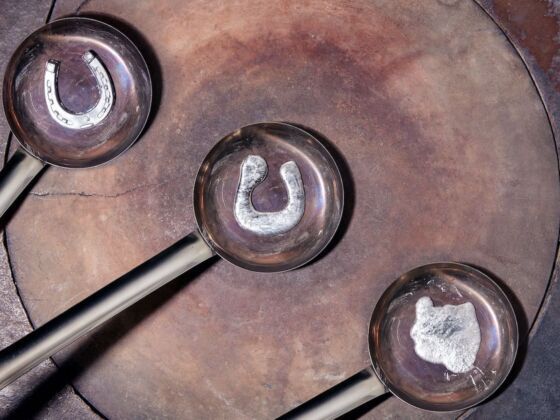In Finland, the new year starts with a little fortune telling. As part of Finnish New Year traditions, miniature tin horseshoes are melted over a fire on a special type of spoon and tossed into the snow or into very cold water, where they freeze instantly into unusual shapes. Those shapes are said to be harbingers of the year to come.
Once the reshaped tin has been plucked out of the water, you hold it in front of a light next to a wall and you interpret the shadow.


